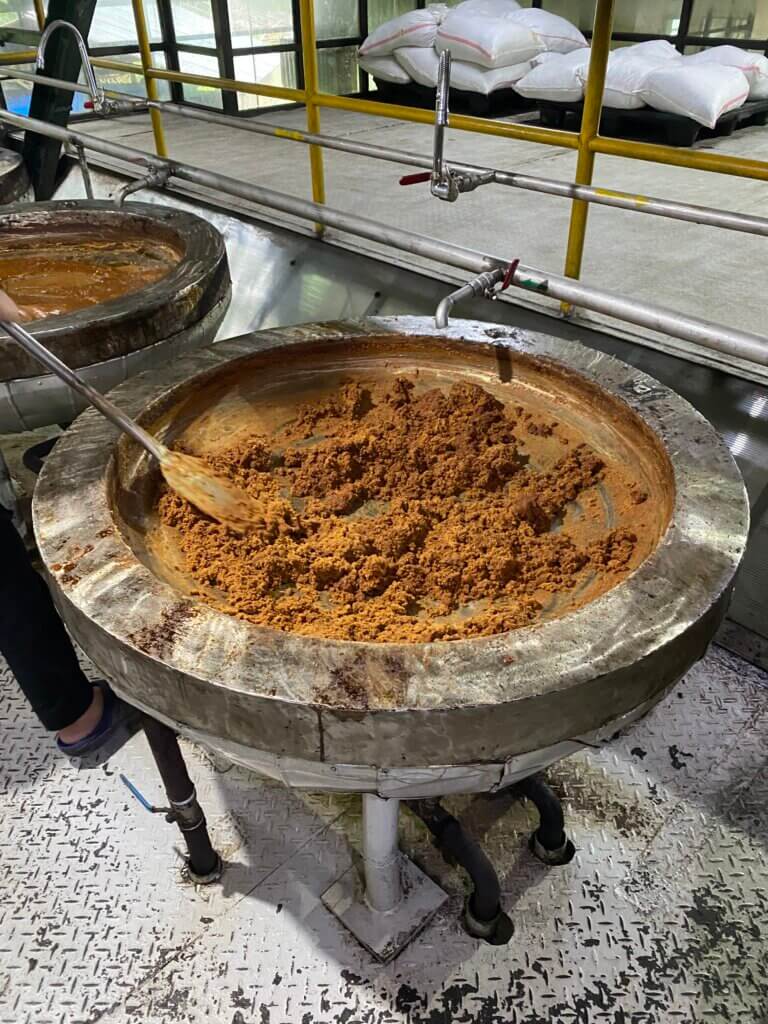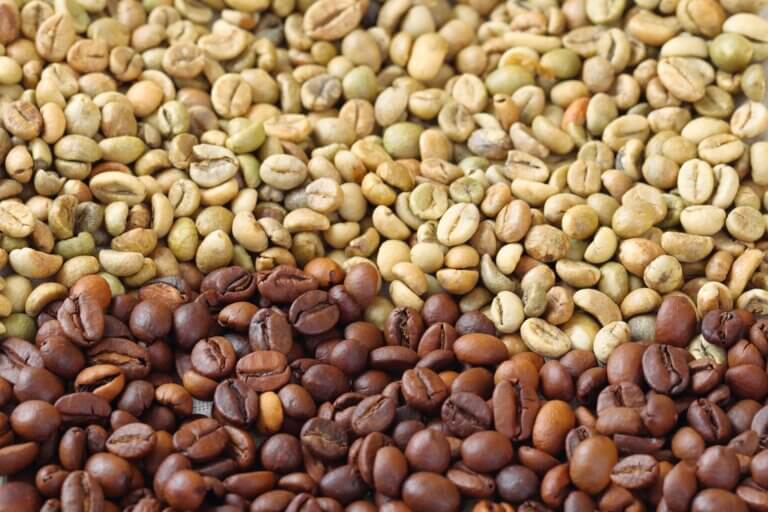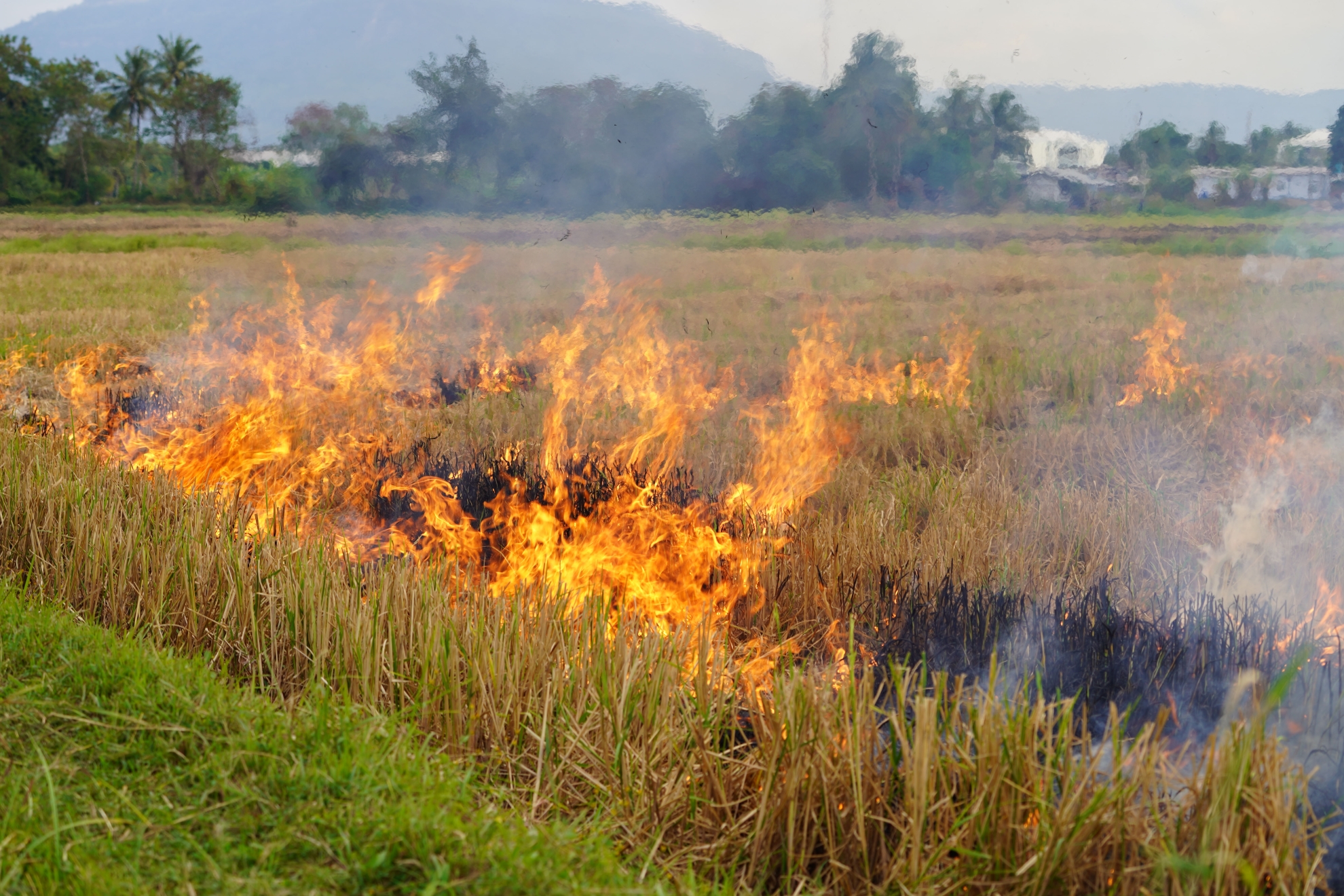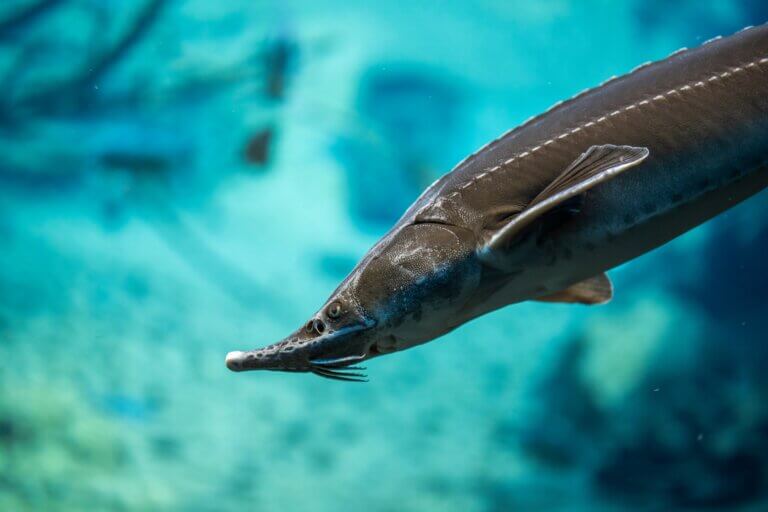Though relatively under-discussed, food waste is a more serious problem than many people realise. According to the UN Environment Programme, each year we throw away around 1.3 billion tonnes of it. In developing countries with inadequate refrigeration and storage, an estimated 40% of all produce is lost to spoilage. Given the high value of agricultural exports for such countries (US$ 500 million per year for Laos), such a high proportion of wastage represents a major economic loss.
This has worrying implications for the climate too, as food waste releases greenhouse gases during decomposition– particularly methane, which traps over 20 times more heat than carbon dioxide. In fact, because we throw away so much of it, it is estimated that if global food waste were a country, it would be the third largest emitter in the world behind China and the USA.
But what if there was a way for restaurants, markets and farms to greatly reduce the environmental and economic costs of food waste disposal, whilst also creating considerable revenue from it? Well, ironically the answer to that question may lie with animals traditionally seen as the enemy by those in food storage and preparation: insects.
Insect-based Waste Disposal
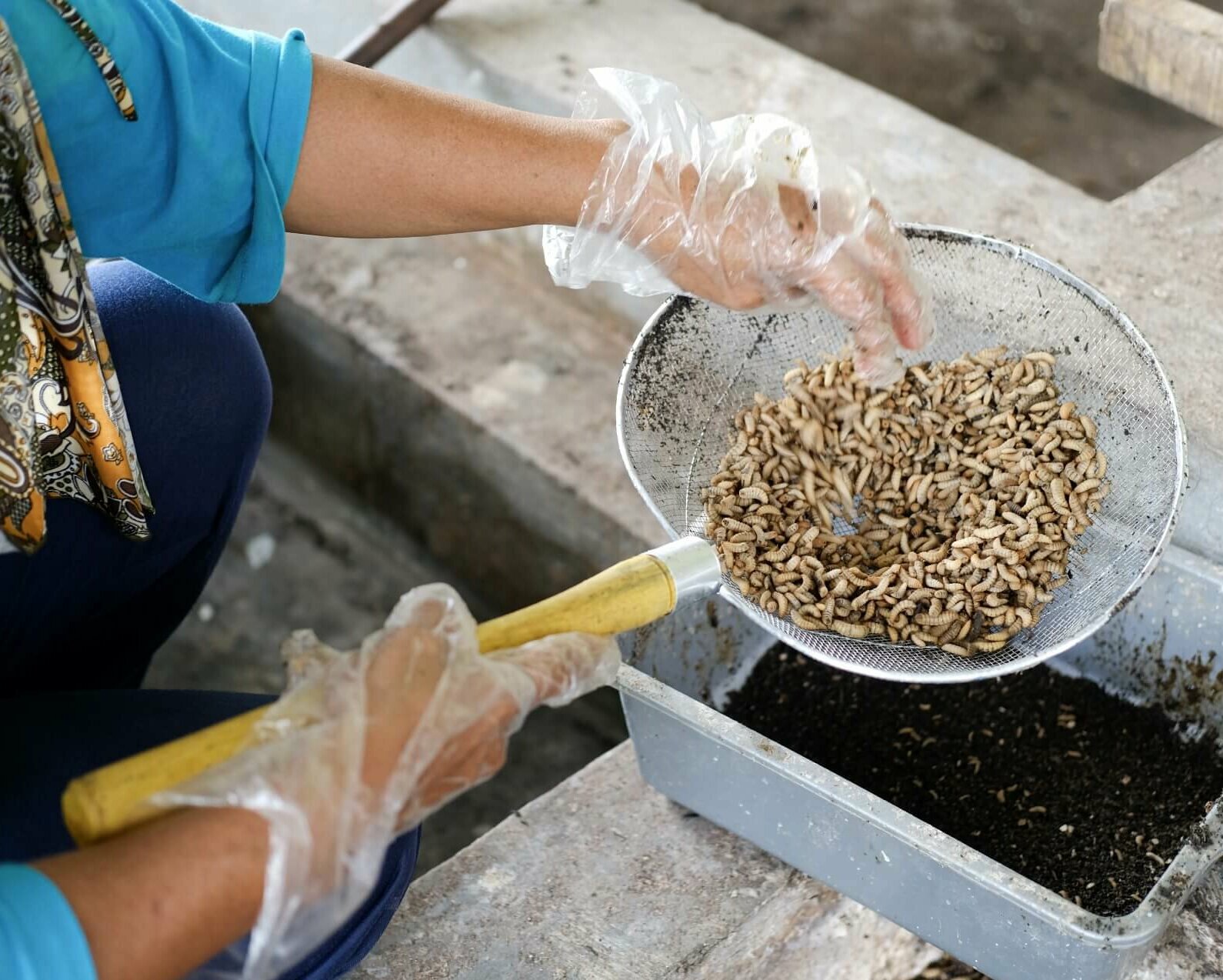
The use of insects as an efficient, inexpensive means of waste disposal is growing in popularity around the world. Feeding organic waste to insect larvae can reduce its weight by 80%, significantly reducing the costs of transporting the remnants to conventional disposal units. Setting up and running facilities for insect-based waste disposal is also fairly inexpensive, as they require neither sophisticated technology nor skilled labour to operate.
Insect larvae used in waste disposal can also be a source of revenue themselves. Relatively speaking, insects have a very high protein content compared to other foodstuffs, and thus can be sold raw or processed as a valuable source of fish and poultry feed. They also produce substances like chitin that can be processed into biomaterials like chitosan, which are used in a variety of industries. However, this requires more complex technology and skilled expertise than a startup insect farm can likely initially afford.
Insect-onomics
With all of this in mind, Seneca proposes a potentially lucrative and value-added project to establish a series of insect-based waste disposal facilities in Laos, making use of the larvae of the black soldier fly (Hermetia illucens).
The black soldier fly lays its eggs (400-800 per fly) near rotting organic material for its larvae to feed on after hatching. In a warm, dark, humid environment, and with moist, partially-decomposed food rich in proteins/carbohydrates, the larvae can grow from less than 1 mm to 2.5 cm in just two weeks. Before pupating into adult flies, the larvae will move away from their food source to find a dry, sheltered environment to complete their life cycle in. As adults, black soldier flies do not feed and require only a warm, moist environment with sufficient natural light during their 2-3 week lifespan. With their high rate of reproduction and simple needs, raising black solider flies on an industrial scale is a financially feasible endeavour.
As well as saving Laos considerable environmental costs in food waste, this project also has great potential for revenue generation due to the commodities it could produce, and the markets it could sell these to. Aquaculture is a major industry in the Lower Mekong and with their high nutritional content, the larvae would be an attractive commodity for farmers looking to buy fish feed. Likewise, poultry farmers could be both important buyers of larvae as feed, and suppliers of poultry waste to feed them with. Using black soldier fly larvae as animal feed has also been found to reduce livestock-related greenhouse gas emissions and could help farmers adapt to climate change when drought or floods limit the production of other feeds.
Additionally, as the larvae process food waste, they leave behind a residue with similar properties to compost that can be sold as fertiliser. Moreover, insect oil can be sold as a supplement to animal feed to increase its protein content.
Because of the simple technology and low costs involved, a single insect-based waste disposal facility can easily be scaled up into multiple facilities of any size across Laos, close to regular sources of organic waste like farms and wet markets to reduce waste transportation costs. They can even be set up by small-scale fruit and vegetable producers struggling with wastage as an extra source of revenue. Additionally, once the facilities start producing regular cash flow, more sophisticated technology and expertise can be brought in to process insect-based biomaterials, bringing in an even bigger income.
Such ventures have already proven highly profitable in other countries. In India, the startup insect farming company, Loopworm (one of several such companies in the country) recently raised US$ 3.4 million in seed funding. Meanwhile, the French company, Ynsect, has raised over 100 times more than that at US$ 400 million.
The Project
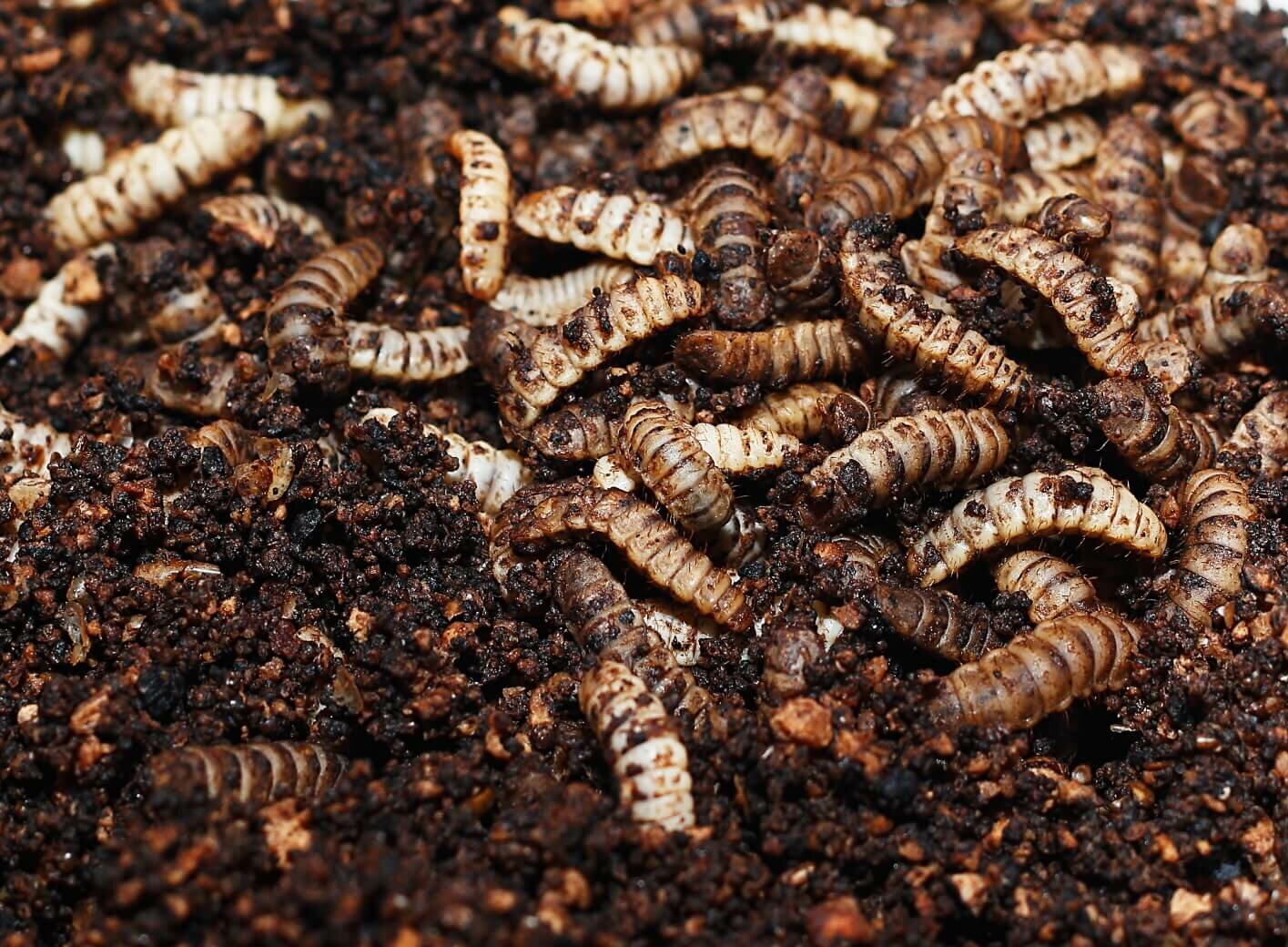
A pilot project to build a facility to breed and process black soldier flies and their larvae, with the capacity to process up to 5 tonnes of waste per day, should take only 6 months – 1 year to set up.
An ideal project owner would be a person or organisation that owns or manages large wet markets or farms in Laos, and would have access to large amounts of food and/or agricultural waste. Such a partner could easily help scale up and replicate a facility within a matter of months once the pilot project succeeds, operating multiple insect-based waste disposal facilities across the country.
Costs
One of the main costs of this project is the process of sorting waste to find suitable food for the larvae. For fastest larval growth, the best foods are ones they can consume quickly, like meat and restaurant waste, whereas agricultural products take longer to break down. Transporting organic waste to the facility and sorting it is a costly, time-consuming process, therefore an efficient means of waste acquisition is necessary. Larvae need only be purchased once to establish a breeding stock, meaning that no major input costs other than waste acquisition should be incurred.
In addition to covering facility construction, initial capital will also be required to conduct initial technical, environmental and financial analyses, monitor and evaluate environmental and financial parameters, and cover operating costs until the project can breakeven. More specifically, capital costs should also cover finding land for construction, and equipment for waste pre-processing, rearing and harvesting larvae, and processing and packaging of larvae for sale. However, most of this equipment will not be expensive or complicated to operate.
The main operating cost for this project is labour, with a facility like this requiring a staff of 10-12 people. However, as day-to-day operations can be done using unskilled labour, hiring staff should not be difficult.
Profitability
Based on the low costs and high profitability of other, similar projects outside of Laos, this project should also be highly profitable. Depending on circumstances, an investor could expect a return on their investment within as little as 12-18 months.
Money from Maggots
With food waste becoming an ever burgeoning environmental and hygiene problem, particularly in developing countries, insect-based waste disposal offers a less environmentally damaging solution than landfills or incineration. Moreover, with the market for insect-based services like this (and the commodities they can produce) continuing to grow, it also offers a more profitable solution, particularly in such an agriculture-driven economy as Laos, where demand for animal feed and fertiliser is predictably high. Private investment in a project like this could therefore do a great environmental service for a country currently lacking efficient waste disposal systems, while generating a significant return for investors.
Author: Seneca Impact Advisors
For more information, please contact impact@senecaimpact.earth

